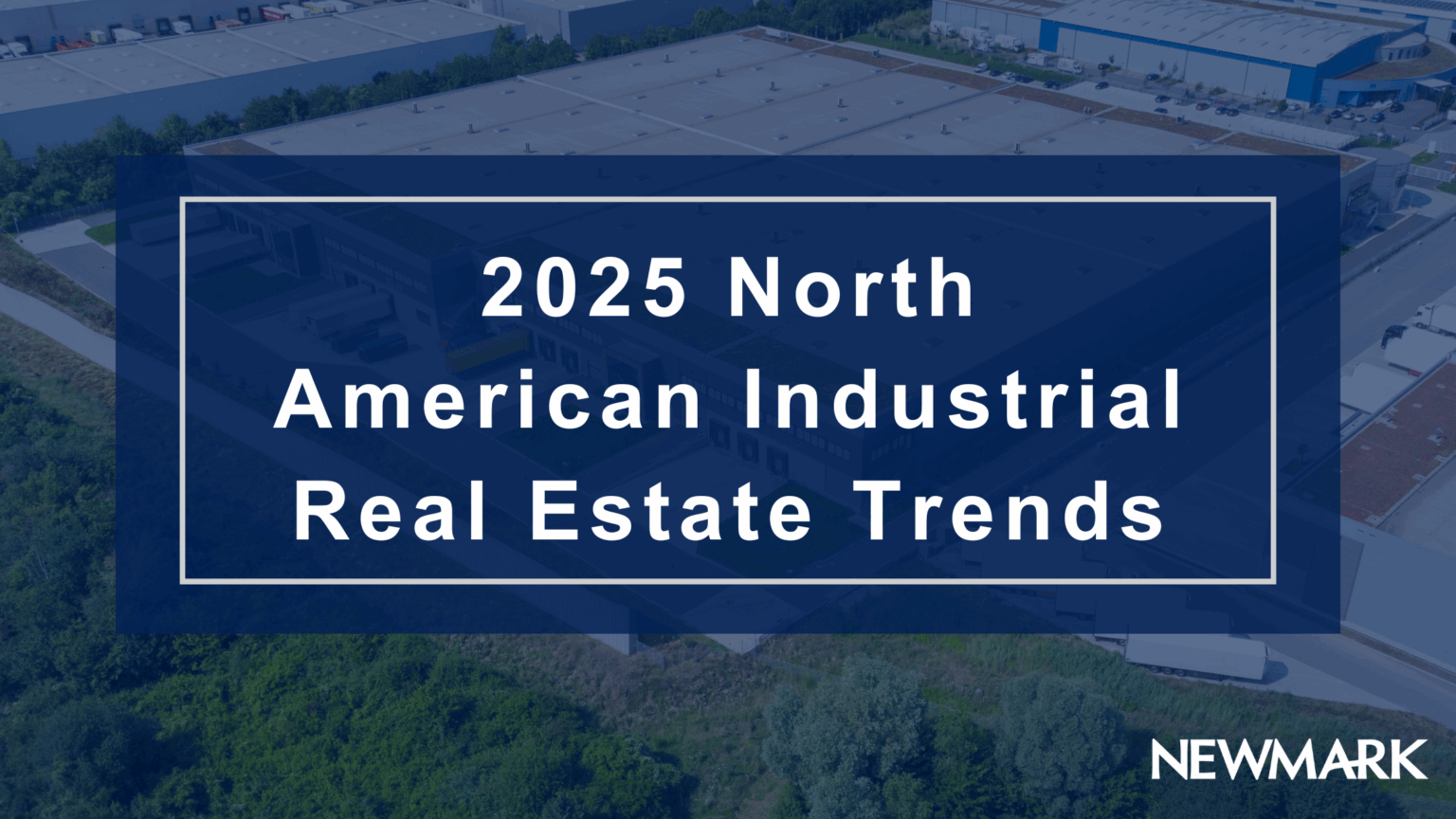Shifting trade dynamics, rising tariffs, and growing onshoring efforts are heavily influencing the 2025 North American industrial real estate trends. According to the comprehensive 2025 Industrial Outlook by Lisa DeNight, Andrew Petrozzi, Mauricio Mondragón, and David Bitner of Newmark Research, supply chains across the U.S., Canada, and Mexico are being restructured in real time to meet new economic realities.
From Mexico’s growing role in manufacturing to U.S. infrastructure investment and Canada’s evolving trade strategy, this year’s market data reveals a continent balancing protectionist policies with global integration.
Reshoring and Foreign Direct Investment Reshape Industrial Demand
Driven by a strategic pivot away from China, North America is seeing increased reshoring and foreign direct investment (FDI)—especially from Asian manufacturers looking to bypass tariffs by setting up shop within the region. The U.S., Canada, and Mexico have each experienced significant logistics and manufacturing growth due to these changes.
- Mexico leads the charge in manufacturing growth, with 53.8% of industrial leasing tied to manufacturing in 2024.
- Canada’s industrial activity is also increasing, largely through the logistics and consumer goods sectors.
- The U.S. continues to attract massive onshoring investments, with $141 billion in major manufacturing projects announced just in Q1 2025.
U.S. Tariff Policy is Reshaping Trade Flows Across North America
The latest report emphasizes how newly imposed tariffs—some reaching over 100% on Chinese goods—have escalated costs and created supply chain uncertainty. For Canada and Mexico, where cross-border trade makes up 34% and 45% of GDP, respectively, U.S. policy changes have outsized effects.
Industrial markets serving West Coast U.S. seaports are already seeing a decline in demand, while Mexico’s inland logistics hubs are booming due to increased truck traffic and new rail projects such as the Interoceanic Corridor of the Isthmus of Tehuantepec and Train Maya.
Energy and Tax Policy Add to CRE Investment Complexity
Beyond trade issues, energy policy and tax legislation are shaping industrial real estate. The U.S. and Mexico are expanding their domestic power generation, while corporate tax reforms aim to reduce production costs and boost CRE investment.
For example:
- Mexico is investing $23.4 billion into its power infrastructure.
- U.S. proposals include lowering corporate tax rates to 15%.
- Canada scrapped a capital gains tax hike to remain competitive.
These changes could increase industrial occupancy by easing operational costs, encouraging domestic production, and strengthening regional logistics.
Conclusion
Despite uncertainty from tariff shifts and global trade policy, 2025 North American industrial real estate trends point to long-term growth opportunities. Reshoring, FDI, and new energy and tax policies are all playing a part in reshaping demand.
Are you investing in industrial properties this year? Let’s talk about how to position your portfolio for the evolving landscape.
Let’ connect today and make your next CRE move a successful one!

